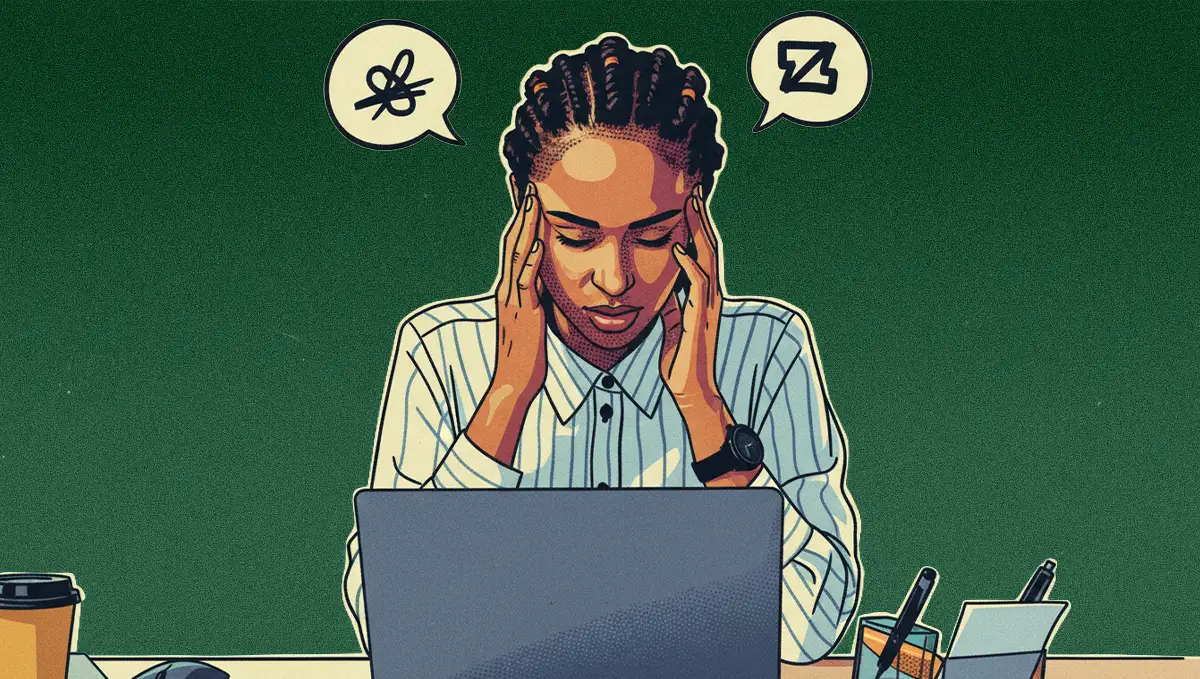Gen Z vs. Hustle Culture: The Battle for the Future of the Workplace

Key Points
As extreme 9-9-6 schedules and urgency culture grows in some workplaces, Gen Z is rejecting these standards to build healthier, more sustainable environments.
Amy Diehl, PhD, a gender bias expert and CIO at Wilson College, cautions that extreme work cultures are an organizational failure stemming from outdated designs and inadequate staffing.
She proposes leaders foster sustainable workplaces by modeling healthy boundaries, clearly communicating expectations, and ensuring adequate staffing, leading to more diverse and profitable businesses.
You just don't have that sense of loyalty to one company. The younger generation recognizes that what they put into work may not be what they get out of it, so they’re not buying into the 24/7 urgency culture.

Amy Diehl
Chief Information Officer
Wilson College
A showdown is brewing in the modern workplace. On one side, a growing movement within the younger generation is rejecting “crisis-mode” work. On the other, the persistent demands of “hustle culture” in some sectors refuse to yield. This push for boundaries stands in contrast to the intense 9-9-6 work schedule (9 a.m. to 9 p.m., six days a week) pushed as a necessary sacrifice for success. But this generational divide isn’t just a clash of values. It’s a rational response to the breakdown of the traditional employer-employee contract.
To understand what’s driving this change, we spoke with Amy Diehl, PhD, the Chief Information Officer at Wilson College. As a gender bias expert, researcher, consultant, and author of Glass Walls: Shattering the Six Gender Bias Barriers Still Holding Women Back at Work, Diehl tackles the issue through the lens of workplace systems.
Diehl sees Gen Z’s pushback as a calculated response to the erosion of the traditional employer-employee contract. The old pact, where loyalty was rewarded with stability, has frayed over decades of changes in the workplace, from the volatility of “push, push, push” startup culture to mass layoffs at established tech giants. With little guarantee of a long-term career, the incentive to sacrifice for one company has diminished. “You just don’t have that sense of loyalty to one company. The younger generation recognizes that what they put into work may not be what they get out of it, so they’re not buying into the 24/7 urgency culture,” she says.
The 9-to-9 problem: Extreme work cultures like 9-9-6, Diehl explains, are inherently exclusionary. Such a model is a relic of an outdated social structure, one where men often had wives at home to manage domestic life, that is incompatible with the modern economic reality requiring two incomes. This reality seems to be resonating with younger generations. “A culture like that automatically excludes anybody with caregiving responsibilities or who wants to have a personal life outside of work. It ends up creating a very non-diverse culture of younger men who aren’t attached and don’t have family responsibilities,” she observes.
Flaw in the design: High employee burnout, constant urgency, and the need for systems like 9-9-6 are symptoms of a deeper organizational issue. “The solution really doesn’t come from the individual level; it comes from the organization,” she says, identifying a flaw in resource planning as a root cause. “If your employees can’t take a two-week vacation without work grinding to a halt, then you don’t have enough staff,” Diehl continues.
Diehl offers a clear, three-part framework for leaders looking to dismantle this kind of urgency culture. First, they must model the behavior by truly disconnecting. Second, they must communicate the expectation that their staff should have boundaries. Third, they must staff appropriately for the work required. She cautions against superficial fixes. Simply reassigning an unfair workload from a working parent to an older employee with grown children is not a real solution. “If you are at a spot where the expectation is this overall sense of urgency, and you find there’s just no fixing it, that’s when you should have alternatives. You can make the choice to take your talents and skills elsewhere. That’s how we can make change as an individual,” she outlines.
For her, building an inclusive workplace makes good business sense, because the blind spots of homogenous teams can contribute to flawed products and missed financial opportunities. “When you don’t have the true range of perspectives in your organization, you really are missing out. In a capitalist society, you’re missing out on dollars. You’re missing out on growth for your company,” Diehl emphasizes. “For those of us in decision-making positions or building our own businesses, it’s about doing it in a way that is healthy and sustainable for all of our employees, so that we can have a healthy and sustainable business.”
Related articles
TL;DR
As extreme 9-9-6 schedules and urgency culture grows in some workplaces, Gen Z is rejecting these standards to build healthier, more sustainable environments.
Amy Diehl, PhD, a gender bias expert and CIO at Wilson College, cautions that extreme work cultures are an organizational failure stemming from outdated designs and inadequate staffing.
She proposes leaders foster sustainable workplaces by modeling healthy boundaries, clearly communicating expectations, and ensuring adequate staffing, leading to more diverse and profitable businesses.

Amy Diehl
Wilson College
Chief Information Officer

Chief Information Officer
A showdown is brewing in the modern workplace. On one side, a growing movement within the younger generation is rejecting “crisis-mode” work. On the other, the persistent demands of “hustle culture” in some sectors refuse to yield. This push for boundaries stands in contrast to the intense 9-9-6 work schedule (9 a.m. to 9 p.m., six days a week) pushed as a necessary sacrifice for success. But this generational divide isn’t just a clash of values. It’s a rational response to the breakdown of the traditional employer-employee contract.
To understand what’s driving this change, we spoke with Amy Diehl, PhD, the Chief Information Officer at Wilson College. As a gender bias expert, researcher, consultant, and author of Glass Walls: Shattering the Six Gender Bias Barriers Still Holding Women Back at Work, Diehl tackles the issue through the lens of workplace systems.
Diehl sees Gen Z’s pushback as a calculated response to the erosion of the traditional employer-employee contract. The old pact, where loyalty was rewarded with stability, has frayed over decades of changes in the workplace, from the volatility of “push, push, push” startup culture to mass layoffs at established tech giants. With little guarantee of a long-term career, the incentive to sacrifice for one company has diminished. “You just don’t have that sense of loyalty to one company. The younger generation recognizes that what they put into work may not be what they get out of it, so they’re not buying into the 24/7 urgency culture,” she says.
The 9-to-9 problem: Extreme work cultures like 9-9-6, Diehl explains, are inherently exclusionary. Such a model is a relic of an outdated social structure, one where men often had wives at home to manage domestic life, that is incompatible with the modern economic reality requiring two incomes. This reality seems to be resonating with younger generations. “A culture like that automatically excludes anybody with caregiving responsibilities or who wants to have a personal life outside of work. It ends up creating a very non-diverse culture of younger men who aren’t attached and don’t have family responsibilities,” she observes.
Flaw in the design: High employee burnout, constant urgency, and the need for systems like 9-9-6 are symptoms of a deeper organizational issue. “The solution really doesn’t come from the individual level; it comes from the organization,” she says, identifying a flaw in resource planning as a root cause. “If your employees can’t take a two-week vacation without work grinding to a halt, then you don’t have enough staff,” Diehl continues.
Diehl offers a clear, three-part framework for leaders looking to dismantle this kind of urgency culture. First, they must model the behavior by truly disconnecting. Second, they must communicate the expectation that their staff should have boundaries. Third, they must staff appropriately for the work required. She cautions against superficial fixes. Simply reassigning an unfair workload from a working parent to an older employee with grown children is not a real solution. “If you are at a spot where the expectation is this overall sense of urgency, and you find there’s just no fixing it, that’s when you should have alternatives. You can make the choice to take your talents and skills elsewhere. That’s how we can make change as an individual,” she outlines.
For her, building an inclusive workplace makes good business sense, because the blind spots of homogenous teams can contribute to flawed products and missed financial opportunities. “When you don’t have the true range of perspectives in your organization, you really are missing out. In a capitalist society, you’re missing out on dollars. You’re missing out on growth for your company,” Diehl emphasizes. “For those of us in decision-making positions or building our own businesses, it’s about doing it in a way that is healthy and sustainable for all of our employees, so that we can have a healthy and sustainable business.”




